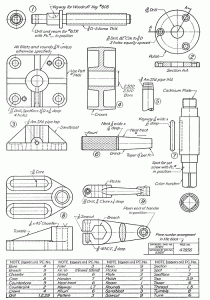
The creator of this shareware tells us on his website that he made up his mind to develop the product when he realized how inconvenient it was to write the translation directly on the original drawings. Indeed, removing the source text and replacing it with the target version is a cumbersome and frustrating task, and one that is likely to produce errors. Not to mention the fact that the translators would need to have AutoCAD ® installed on their computers, something which cannot simply be assumed.
Translating with TranslateCAD®, or similar programs, takes care of these two key problems, seeing as the software extracts the text from the diagrams thus allowing for their subsequent processing with conventional translation tools. TranslateCAD® will produce two .txt files: one with the linguistic content of the .dwg or .dxf file and one with all the codes needed for subsequent reconstruction. Once the extracted text has been translated (which you can do with MemSource, Trados or any other CAT tool), you simply feed the two .txt files—the one with the codes, which will remain intact, and the modified one with the target version—back into the program. TranslateCAD® then uses the two to regenerate the drawing.
Using tools like this one can save translation professionals a lot of time, and that will have a direct effect on the cost of projects. So, if you have AutoCAD files that need translating, please ask our team for a free quote; we have the tools to provide you with an accurate, fast and cost-efficient translation.
To read the original Spanish post go to:





